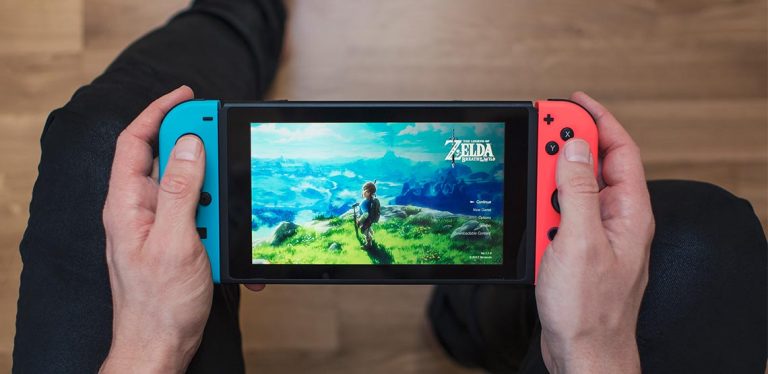Should You Switch to the Switch?
The Nintendo Switch is the latest console from Nintendo, released in March of 2017, yet many consumers may be wondering if it’s worth purchasing. Why not stick with the Wii U?
Nintendo isn’t exactly known for making technological improvements with new consoles, so it’s a valid to ask if the Nintendo Switch is worth it.
Upgrades Were Made
For starters, Nintendo did in fact upgrade their hardware in a major way. The Nintendo Switch runs on (modified) Nvidia Tegra X1 processor — which is a quad-core, 64-bit CPU, with an Nvidia Maxwell 256-core GPU. The Tegra X1 is in fact one of the most powerful mobile chipsets in recent times, so this is a surprisingly massive hardware upgrade for a company not known for adding much hardware tech to its new consoles.
Compare this to the 1.24 GHz Tri-Core “Espresso” CPU in the Wii U – if you have no idea what any of this means, let’s just say it’s quite a significant upgrade, which means the Nintendo Switch has quite a bit more power to display sharp graphics and gameplay. The Nintendo Switch can display games in 1080p resolution at a maximum framerate of 60 frames-per-second.
It’s not quite Xbox/Playstation powerful, and consoles are certainly not as powerful as dedicated gaming computers, but the Nintendo Switch is certainly competitive with high-end mobile tablets and devices.
The internal storage wasn’t upgraded in the Nintendo Switch, however – both the Switch and the Wii U use the same 32GB internal storage. But whereas the Wii U expansion is limited to external USB memory or hard drive, the Nintendo Switch can be expanded via microSD, microSDHC, and microSDXC.
However, all of the above is hardware specs on paper – what really matters is how the consoles actually perform, and if game developers take advantage of the hardware inside the console. So far, a general consensus among Nintendo gamers is that Nintendo Switch is just displaying some extra minor effects and graphical improvements, but nothing jaw-dropping.
The Nintendo Switch really shines when its docked, as compared to being in handheld mode, because that’s when the console can maximize its hardware performance. So when using the Nintendo Switch as a docked console, users really should see significant graphic improvements when compared to the Wii U. In handheld mode is where the improvements seem minor.
The Designs Do Differ
Design wise, they’re nearly the same device – they’re both home-based consoles that can be turned into handheld consoles. The difference here is that the Wii U’s handheld mode was really only intended as a being a game controller, with very limited remote functionality.
This is because the Wii U’s remote play functionality was limited to basically streaming the gameplay from the console to the handheld device mode. The Nintendo Switch, on the other hand, can literally be used as a portable device, meaning you can take your gaming anywhere with you.
You May Also Like:
Related Search Topics (Ads)
While the Wii U and the Nintendo Switch have the same exact screen size, at 6.2 inches, the quality is remarkably different. The Wii U’s touchscreen was limited to a resolution of 854x480, and had a very “plastic” quality feel to it. The Nintendo Switch has an LCD screen capable of 1280 x 720 resolution, and is just more vibrant in color depth overall.
Again, if we’re confusing you, it’s important to remember that screen size is not the same as screen resolution. Screen resolution is, simply put, the size at which objects are displayed on the screen. Larger resolutions tend to mean better clarity and more detail, because images become “blurry” when they’re blown up to a larger size (lower resolutions means images are displayed much larger).
So you could have two screens of the same size, but the one that has a larger resolution will have better picture detail overall.
Gaming Options
As far as overall game availability goes, the Wii U has more, since it is an older system. Plus, many classic Wii U titles are bound to drop in price, or already have, from their release date prices. The Nintendo Switch, being the newer system, doesn’t have as many titles available, but its catalog has certainly expanded since its release. Plus the best Nintendo Switch games out there are ones that are pretty exciting. Of course, you will pay more for newer titles, so keep that in mind.
Of course, no Nintendo console would be complete without a plethora of additional accessories to complement the system, and the Nintendo Switch already has plenty. As of writing, available accessories for the Nintendo Switch include items like the Joy-Con steering wheel (for racing games), charging docks for the handheld controller, light-up dock shields, and licensed microSD cards.
A note about the latter, though: there is no difference between buying a regular 128GB SanDisk microSD card, and a 128GB SanDisk microSD that is licensed by Nintendo, except for a $30 price difference because Mario is on the cover.
All in all, the Nintendo Switch is a good choice for Nintendo-fans who want the latest console, and some technological improvements. If you’re trying to decide between a Nintendo Switch and a Wii U, there’s almost no reason to not go with the Nintendo Switch, as long as you keep your expectations within the realms of what Nintendo has released in the past.

